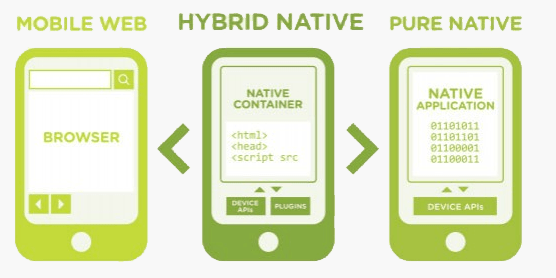We are all aware of the significance of mobile applications in our daily lives. The number of mobile devices and applications is increasing at an exponential rate. According to Statista, there are around 6.64 billion smartphone users worldwide now, and there will be approximately 37 billion mobile apps in the first quarter of 2022. 28 billion apps accounting for Android devices and approximately 8 billion apps for iOS devices, according to Forbes.
In this scenario, it is critical for the company to provide a rapid and high-quality app experience to its users in order to stay competitive. Only a well-executed mobile app testing plan will enable you to do so. It goes without saying that a mobile application differs from a desktop application at numerous levels. This is something to think about while preparing your mobile app testing procedure.
Mobile Web Applications, Native Applications (Pure Native), and Hybrid Applications are the three types of mobile applications based on functionality and technology employed.
Mobile Web applications:
These mobile applications are websites that may be accessed via a mobile browser on a mobile device. They are simple to create, easy to use, and do not require installation because you can access them via a mobile browser. Because they don’t provide offline capabilities, they have several limitations. The re-distribution of mobile web applications is not supported by mobile app marketplaces such as Google Play and App stores.
Native Programming:
Native applications are platform-specific mobile apps developed for particular mobile operating systems like Android, iOS, Tizen, Windows 10 M0bile, and BlackBerry. Native apps work offline and support all the features of their device. Developing and maintaining Native applications is expensive as compared to mobile web apps.
Hybrid Apps:
As the name suggests, hybrid apps have features of both mobile web and native applications. They are built using web technologies like HTML5, CSS, and JavaScript for multi-platform usage. The code is then planted into a native wrapper app using cross-platform mobile app development frameworks like PhoneGap, Xamarin, Mobile Angular UI, Ionic, etc.
What is Mobile app testing?
Now that we are familiar with the different types of mobile apps, we now proceed to understand briefly, the meaning and different types of mobile app testing, and how easy or complicated it is to test each kind of mobile application.
Behind every extraordinary mobile app experience, there is a lot of mobile app testing involved. It is a process to test the functioning of a mobile app in terms of quality, usability, compatibility, performance, etc. This calls for a strong mobile app testing plan for accommodating new features, updates, and bugs and for boosting app metrics.
To understand more, let’s discuss our mobile app testing checklist:
>Test cross-platform compatibility of the mobile app: To ensure the mobile app works uniformly across different OS-screens size-resolutions, we need robust cross-platform testing in place.
>Testing the app for all possible settings and configurations: Ensuring that the app is compatible with both in-app and device based features like screen resolution, camera, sensor, OS versions, etc.
>Testing should be based on native, web mobile app and hybrid apps for UI element alignment and run functional tests to validate key app features.
>Performing comprehensive front-end testing (integration, unit, performance, and regression and acceptance tests) to check the app’s GUI.
> Perform database testing for app back-end. Perform SQL, performance, and security testing to control data loss and SQL deadlock.
>Test your app around memory and data storage, run negative and positive tests and keep an eye on every app release and problems that might occur due to app sizes.
>Test the app performance in different network conditions (in weak signals, data transitions, network speed, jitters, packet loss,etc.)
>Test the app for the user flow on different devices and OS. Simplifying the app login (fingerprint, face ID, UserID-password) to ensure best app experience.
> Opting for a mobile app testing process would help increase app productivity with automation.
You can perform mobile app testing using Appium and other open-source testing tools. Explore tools that help in creating Custom IDEs, create in-house scripts, and cloud testing for identifying bugs.
>Ensuring mobile app security. It is important to ensure that mobile apps are secure because of diverse OS components in place. It’s important to secure source code, database, perform penetration testing, use cryptography, implementing HTML-SSL-TLS security layer, etc.
Conclusion
Mobile app testing is critical for the whole app experience, and a bug-free app contributes to your company’s success and the development of a loyal consumer base.














